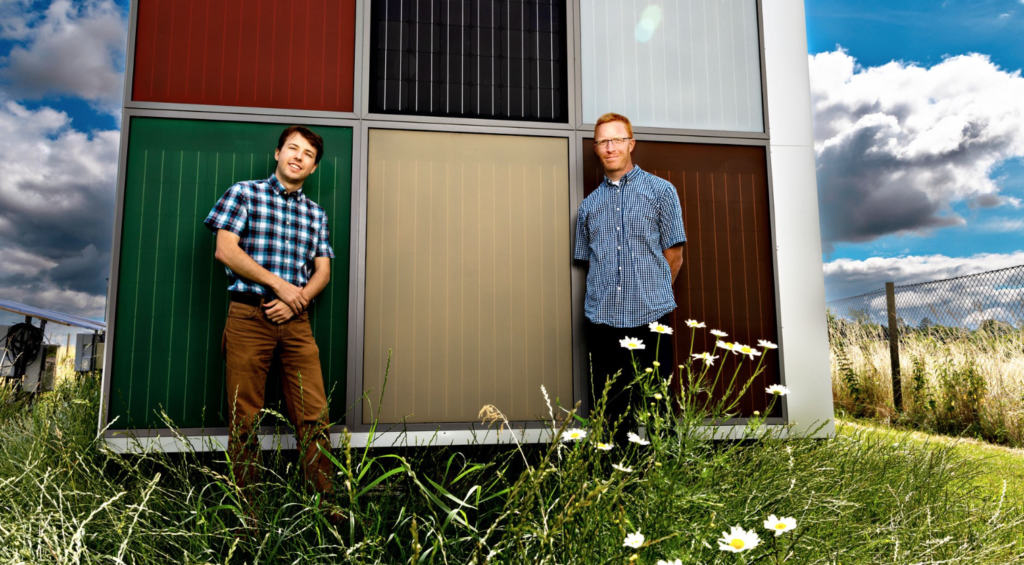Photovoltaic panels for walls: how much does the color affect the yield?
(sustainabilityenvironment.com) – How do you get the best compromise between aesthetics, energy production and price when it comes to photovoltaic wall panels? This question is answered by the UnitSun project, a research initiative conducted by the Technical University of Denmark (DTU) together with the companies MG Solar and HSHansen.
Scientists from the Danish university together with the technicians of the two companies started a test to evaluate how and how much it changed the energy performance of the solar facades using colored modules. In order to do so, they created a demonstration house in the DTU Risø Campus: a sort of Rubik’s cube in which to test the new integrated photovoltaic. The south side of the building was covered with traditional black solar cells, while on the west side were installed several colored pv panels including even a white module. The target? “Provide a reliable estimate of what solar cell facade elements will mean for domestic energy – explains engineer Sune Thorsteinsson, head of the project -, so that it becomes easy to choose them like any other facade material”.
Colorful photovoltaics, beyond the yield
Colored solar panels are nothing new. Several companies, also in Italy, have brought on the market products that can change the classic aesthetic. Through different technical solutions – from the treatment of glass, to the use of organic polymers or photonic crystals – the sector has baked in recent years increasingly customizable modules. In some cases even able to imitate the texture of different types of building materials, from wood to marble. While it is true that the eye also wants its part, it is also true, on the other hand, that black represents an unbeatable alternative to efficiency. But this figure may not be so important once you have summed it up.
Read also Solar module performance degradation: 13 panels compared
The test results showed that the white photovoltaic loses about 50% of the energy produced compared to the black element. The reduction is 20-30% in the brick color unit and 40% in the bright red one. But even if the colored photovoltaic panels for walls are less efficient, explains the University, “energy production should still be able to compensate for additional costs, especially since the entire facade element replaces a conventional element and also generates gains”.
The experiment used a laser light source to test the modules from all angles and also obtain data on the role of colors in the glare effect, the reflection that is generated at a certain angle of the sun’s rays.
The information collected was supplemented by data from an advanced measurement system developed by Ph.D. student Markus Babin. What will they do now? “With the help of the DTU, we expect to establish a catalog of possibilities, their effects and their costs,” explains Pernille Brændstrup Kjær, head of department at HSHansen. In addition to colors, the team is also experimenting with different textures – such as sandblasted glass – and new surfaces that can improve the performance of the system as a whole.

